dance
Dance
Ballet
Ballet class is a very structured form of dance. Ballet is a classical dance form demanding grace and precision. It employs formalized steps and gestures set in intricate, flowing patterns. All to create expression through movement.
It is imperative to have a proficient understanding and execution of ballet no matter what form of dance or art you pursue. If Broadway is your goal it is a must.
Children should start early with our combination classes for 2-5 year olds: Ballet-Tap-Tumble classes.
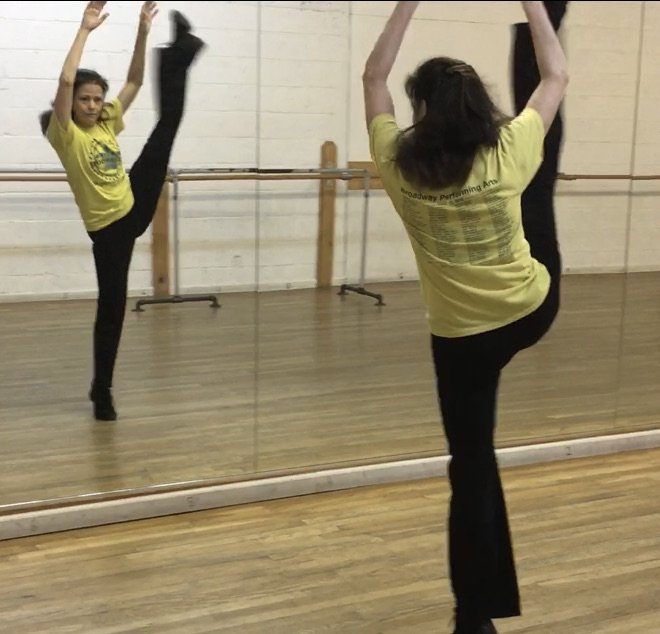
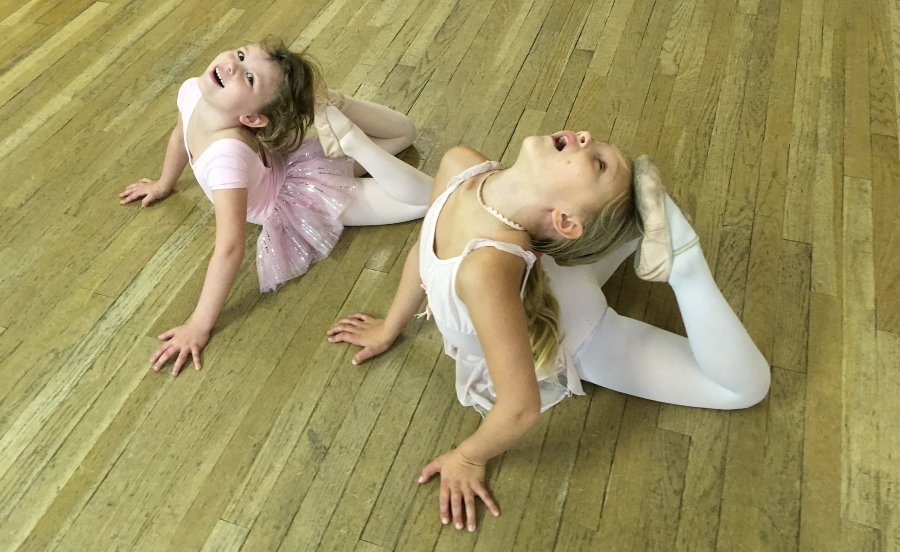
Ballet-Tap-Tumble (ages 2 -4)
Looking for dance lessons for toddlers? This is a one of a kind combination class structured in three sections. The students will begin every class learning how to warm their bodies up with stretching exercises. Once the students are warm they will begin learning the basics of Ballet technique.
The dancers will start with plies, tendues and degages. They will eventually progress to more advanced combinations from retires, ronde jambes to grand batements. Then they will move to the center of the room for basic turns and jumps in the center and across the floor.
Then they will move on to Tap. Starting with simple toe taps and progressing by the end of the year to shuffle, flaps and ball changes. Throughout the class they will be learning through lots of imagery and association.
Then we bring out the mats so they can begin to learn basic tumbling moves. They will start with crab walks, back bends, bear crawls, front rolls, etc.
By the end of the season they all will be well on their way to cartwheels, if they’re not there already! We will also bring out a mini trampoline placed on mats for safety. The mini trampoline is used to give them the feel of jumping and rebounding.
The instructors will be holding the students hands at all times. This is a unique and valuable tool toward the more advanced jumps and tumbling tricks they will be executing in future classes. The students will complete this ballet tap tumble class with an overall awareness of their own bodies. They will have an understanding of how to work together as a group. And ultimately will enhance their flexibility, coordination and balance. And all the while having the time of their life!

Ballet-Tap (ages 5 -7)
The students will begin every class learning how to warm their bodies up with stretching exercises. Once the students are warm they will begin learning the basics of Ballet technique.
The dancers will start at the barre beginning with plies, tendues and degages. They will eventually progress to more advanced combinations at the barre from ronde jambes to grand batements. Then they will move to the center of the room for basic turns and jumps in the center and across the floor.
Then they will move on to Tap. Starting with simple toe taps and progressing by the end of the year to shuffle, flaps and ball changes.
The students will complete this ballet tap class with an overall awareness of their own bodies, enhancing their flexibility, coordination and balance. And all the while having the time of their life!
Ballet II, III, IV
 The next steps toward gaining a full understanding of Ballet. Once the student progresses they will begin to learn the terminology and structure of classical ballet. This is an entire hour (one hour and a half for the more advanced classes) dedicated to the highly structured ballet class.
The next steps toward gaining a full understanding of Ballet. Once the student progresses they will begin to learn the terminology and structure of classical ballet. This is an entire hour (one hour and a half for the more advanced classes) dedicated to the highly structured ballet class.
It will range from the basic exercises starting at the barre with plies. About half way through the class they will move away from the barre and begin with simple exercises in the center. Starting with tendues and adding a turn combination. Then advancing to adagio which is a combination of steps in the center done to adagio (slow moving) music. They will then progress to jumps.
Beginning with petite allegro (small jumps) and moving toward grande allegro (bigger jumps which eventually will be executed across the floor) combinations.
It is so very important for every dancer to know the ballet terminology. Knowing the names of each ballet movement, position and step begins in Ballet I and continues throughout all of the levels.
When the students are ready for point work we will schedule it accordingly. The advanced class will incorporate various styles of music and rhythms to expand their repertoire and further their ability to learn various choreography.
Pointe

Pointe is only suggested for those students who have had at least three years of structured classical ballet. They should have the proper foot and ankle strength. And also have been recommended by their ballet teacher. This class requires a specific shoe called a pointe shoe. It is extremely important the shoe be fitted properly.
The pointe shoe, just as an athlete’s cleats, are crucial to the health and longevity of your feet! There are many types of pointe shoes from Capezio, Sansha, Bloch, Freeds and many more. Your teacher (or knowledgeable sales person) should be able to help you find the right shoe that is appropriate for your foot. Everyone’s foot is unique. A shoe that is good for someone who has narrow feet may not be good for someone who has a wider foot. The shoes are made slightly differently depending on your skill level as well.
At BPA Pointe work will start with a few minutes at the end of those classes labeled Ballet/Pointe. The students will learn how to sew their ribbons and elastic. They will learn how to prepare their toes by taping them. If needed, where to place the protective pads or lambs wool. Either is acceptable although the lambs wool takes up less room in the box of the shoe. There is a very specific way to wrap the ribbons. They should be worn low around the ankle, tied in a knot on the inside of the ankle with the ends tucked in. Then we put them on their feet.
The beginning exercises will be very basic. Working through the shoe just in a standing first position before we ever get on pointe. Then easily graduating to finding the correct placement on pointe is so very important. Being strong enough not to wobble once up there is key. When that is achieved then begin the endless releves. Nothing will strengthen your feet and ankles better than releves over and over again in each position. Once the strength is built up they will graduate to an entire class dedicated completely to working on pointe.
Dance is the joy of movement and the heart of life.
Dance
Hip Hop
A fun way for any student to explore the pop culture phenomenon hip-hop! Hip Hop’s roots are in African dance or funk jazz and street dance. Hip Hop dancing is an ideal way to express one’s creativeness. It allows you to be expressive through the movement. The dance comes from the soul. The body movements go with the beat and rhythm of hip hop music. There is breaking, popping, locking, and free styling in hip hop dances. The jumps, breaks, and rotations in the dance are combined in such a way that the dance style becomes an informal and explosive one.
Hip hop dancing is considered a good exercise for those who perform these dances. It helps to improve flexibility and develop body balance. It also helps with your muscle coordination. This dance allows the dancers to improve their own style and to remain in good body shape. It also leads the dancers to a state of spiritual wholeness. Hip hop dancing includes many steps and movements that are not present in ballet and ballroom dancing. The jazz, ballet, and other traditional dance forms are technical and require more formal training. There is a term for each and every movement in jazz and ballet. But this is not the case with hip hop dancing and the dancers experience freedom while dancing. The only thing the dancers should have is to become familiar with the dancing technique.
Hip hop dancing can be learned by all those who are interested in dancing. The class will start with a warm up that includes stretching and body strengthening, then they will work on specific street style movements and then will ultimately learn an entire hip hop routine that they can perfect and show off to their family and friends!
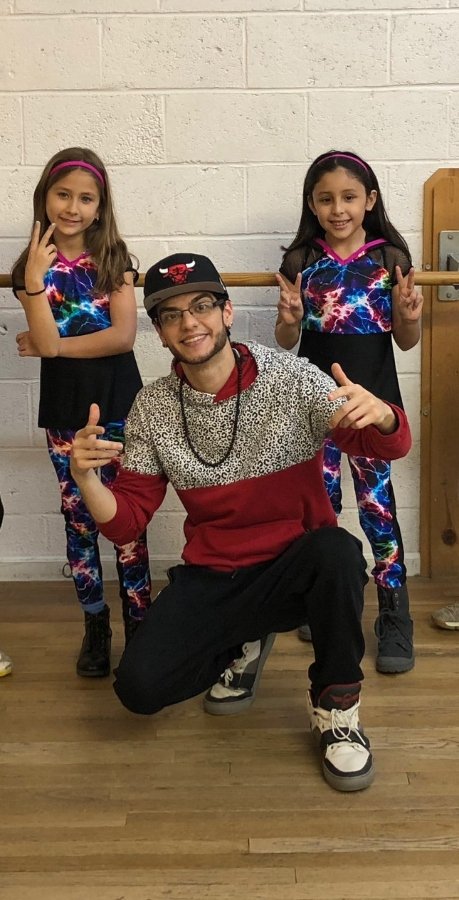
Dance enables you to find yourself and lose yourself at the same time.
Dance
Jazz – Contemporary
This class involves stylized Jazz and Contemporary movement. Popular and classic stylized music is used. The style of the music inspires the movement. Jazz dance includes a wide range of dance styles. It originated in Africa. And when it got to America one of the first dances was called the Lindy Hop. It was considered a popular social form of dance.
From the 1930’s to the 1960’s Jazz dance was transformed into a theatre based style. Many choreographers used this style of dance. Jack Cole, Agnes de Mille and Bob Fosse were one of the first. They each added their own unique style. This is when those choreographers started using professionally trained dancers. In the 1950s Jazz was heavily influence by the Carribean. And the latin american dance styles as well. All these styles had one thing in common. They were motivated by a variety of rhythmic contemporary music.
Contemporary dance explores the basic principles and physicality of Contemporary Modern dance techniques. These techniques include Limón, Horton, and Graham in addition to many others. Classes start with a basic Jazz warm up. Starting with head rolls to warm up the neck. The warm ups progress all the way down the body to the legs and feet. These warm ups all start with very basic isolations. They will be learning basic stretches as well. Then the class naturally progresses into exercises across the floor.
These exercises will progress to traveling steps. They are also performed across the floor. Then move on to basic simple jumps. The more advanced the class the more complicated the jumps become.
Each class will work toward performance techniques. At the end of each class they will work on a number. These combinations are similar to what you will encounter in a Broadway dance audition.
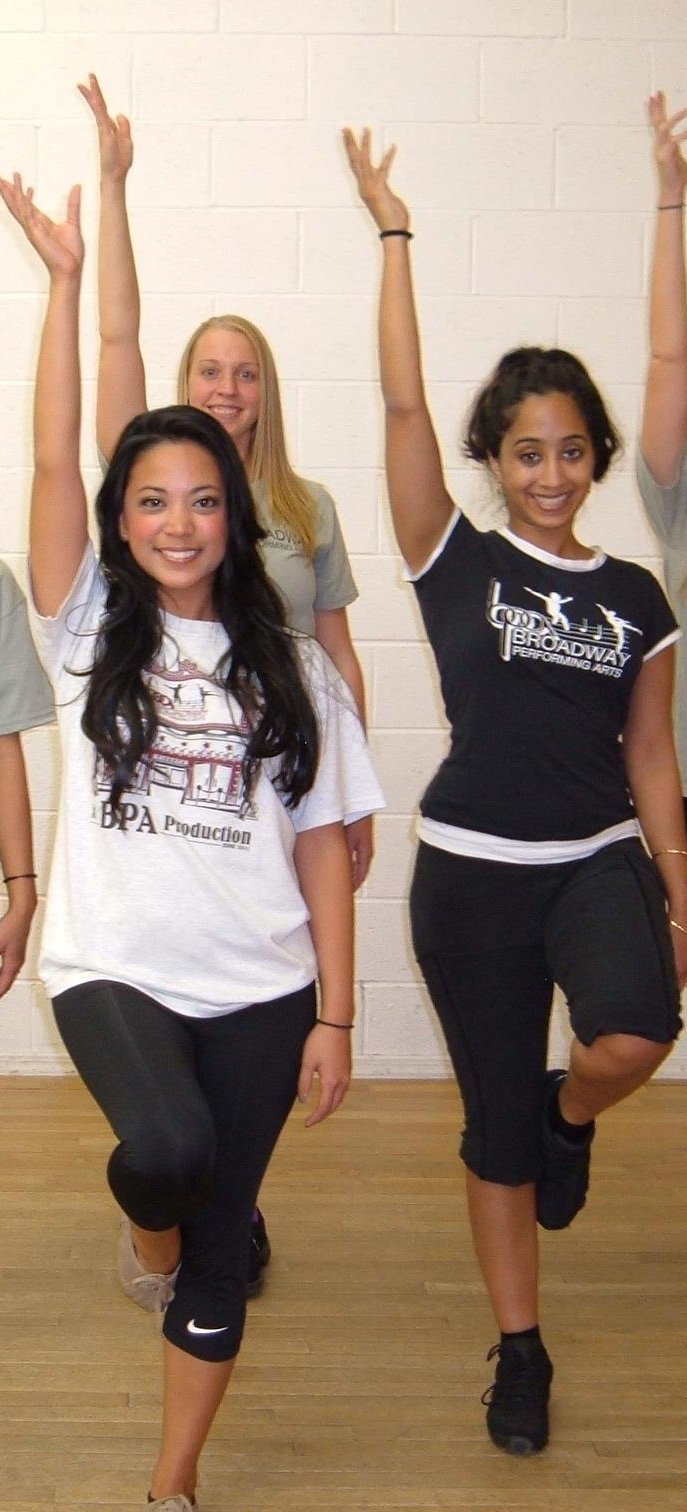
Dance is music made visible.
Dance
Tap
Tap dancing is considered to be the most American of all dance forms. It’s also one of the most fun forms of dance. The only requirement is the ability to make sound from your feet! Anyone can do it. It just takes a couple of classes to be able to put a few basic steps together and you’re dancing! It is so important for any dance student because it develops rhythm, timing and phrasing. And gives rhythmical co-ordination of mind and body.
This form of dance is defined by using the sounds of tap shoes striking the floor as a form of percussion. The tap shoes have taps on the toes and the heels with two distinct sounds for each. Two major styles exist. There is rhythm (jazz) and there is the classic Broadway style. The Broadway style focuses on dance and movement, and is widely performed in musical theater. Rhythm tap focuses on musicality.
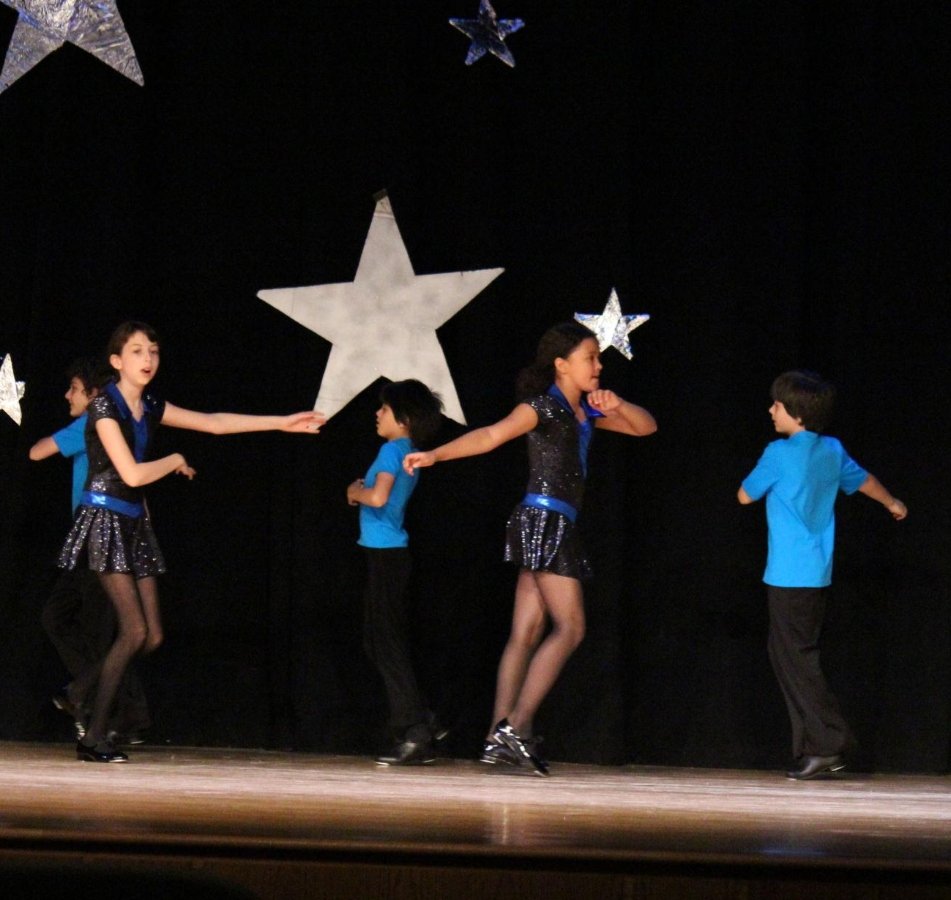
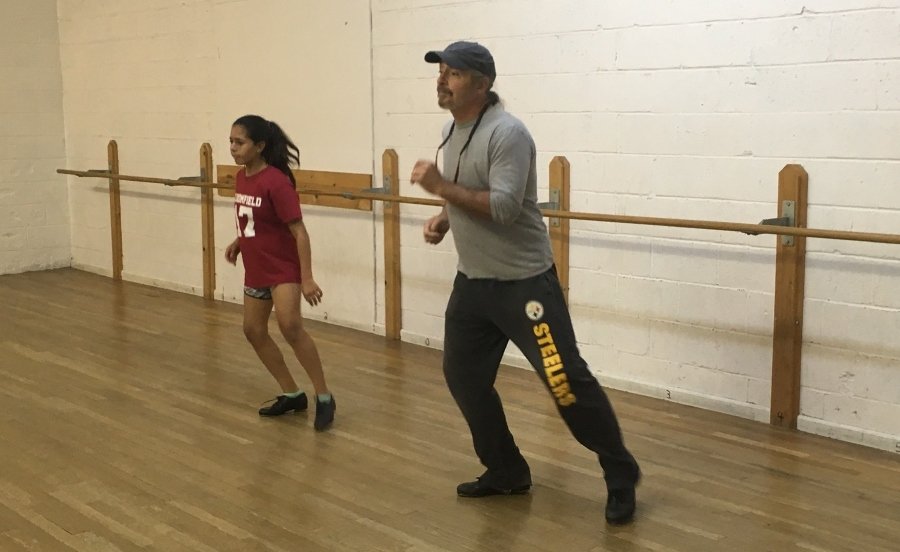
Tap Level I
Students learn basic terminology, timing, style, and clarity of sound. This is where the student starts to enjoy the ability to make sound and rhythm with their feet. They will begin to learn the names of the basic tap sounds and steps. Knowing the terminology is as important as executing the steps.

Tap Level II
Students will advance to more complicated combinations of steps. Their vocabulary will now include single, double, and triple time steps, riffs, pull backs, and upper body style.
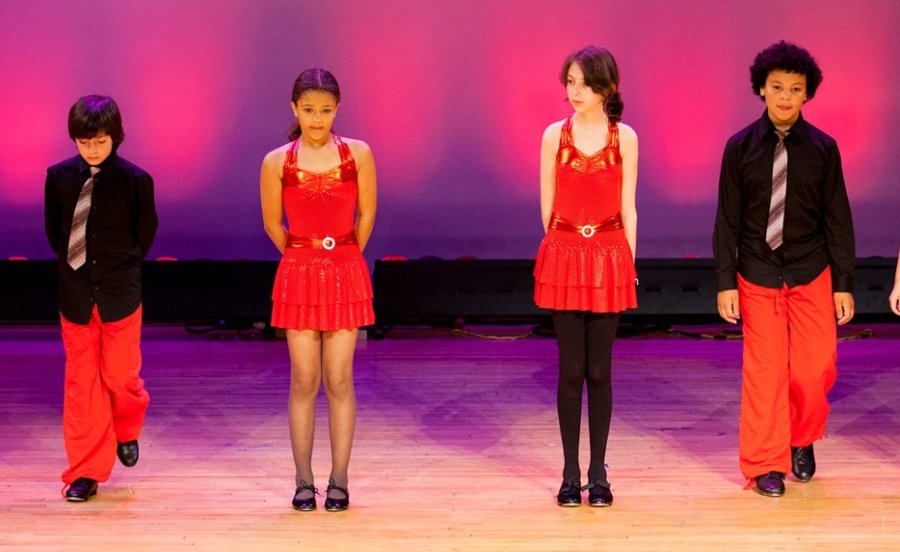
Tap Level III
We’ll explore advanced techniques and different styles from Broadway, to low into the ground Hoofing style. They will also explore the more contemporary strong modern styles of Rhythm and Jazz styles. By the end of this advanced level class they will be ready for any Broadway show audition.
Private Instruction
BPA offers private dance lessons in all forms of dance. Private lessons are designed for those students who may feel they need a little extra help to supplement their regular weekly classes. Or those students who are auditioning for a performance or a show. Or a student may be preparing for a competition. Or you may just want to enhance and improve your ability.
These lessons are designed specifically for your needs. The lessons are one on one. They are very focused on your skill and improving on that skill to give you that added edge over the competition. Private lessons are taught by professionals in that specific genre of dance.
We offer private lessons in the following forms of dance: Ballet, Tap, Jazz, Lyrical, Hip Hop, Musical Theatre choreography and even Acrobatics.
